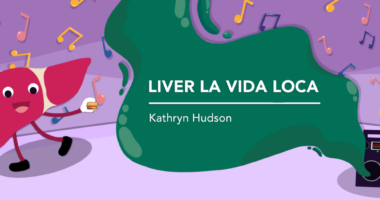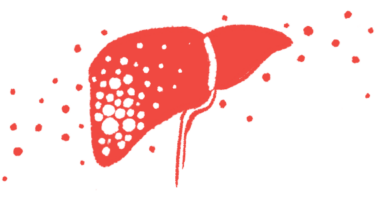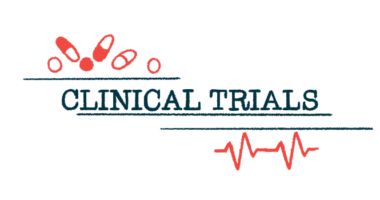Top 10 liver disease stories of 2024
Readers sought out stories about liver disease treatments, clinical trial results

In 2024, Liver Disease News kept readers informed aboout liver disease research, treatments, and clinical trials. Here are the 10 most read stories, each with a brief summary. We’re excited to continue supporting the liver disease community in this new year.
No. 10 – Fatty Liver Alliance’s petition calls for Rezdiffra in Canada
The Fatty Liver Alliance, a Canadian advocacy group, launched a petition that calls on Madrigal Pharmaceuticals to seek approval of Rezdiffra (resmetirom), its oral medication for metabolic dysfunction-associated steatohepatitis (MASH), in Canada. MASH, previously known as nonalcoholic steatohepatitis (NASH), is a severe form of fatty liver disease that causes liver inflammation and scarring (fibrosis). Rezdiffra, used along with diet and exercise, is the first approved treatment for fatty liver disease. It’s available only in the U.S.
No. 9 – Upcoming US study aims to assess MASLD landscape
The U.S. government announced plans to start its first national study on metabolic dysfunction-associated steatotic liver disease (MASLD), a form of fatty liver disease that’s not caused by alcohol misuse and was previously known as nonalcoholic fatty liver disease. Led by the Agency for Healthcare Research and Quality, the study seeks to find out how common MASLD is in the U.S. It will also look at the costs of diagnosing and treating the condition, and the financial impact of leaving the disease untreated and allowing it to become more severe.
No. 8 – 3 Phase 3 trials testing efruxifermin in fatty liver disease patients
Akero Therapeutics announced in August that all three planned Phase 3 clinical trials in its SYNCHRONY program of efruxifermin, its experimental under-the-skin medication for fatty liver disease, had been initiated. The U.S.-based SYNCHRONY Outcomes trial plans to enroll up to 1,150 adults with MASH and compensated cirrhosis, which is when the liver is permanently scarred but still works. The SYNCHRONY Histology study aims to recruit up to 1,000 adults with MASH, but no cirrhosis, and the SYNCHRONY Real-world trial will enroll up to 700 adults with either MASLD or MASH; both at hundreds of global sites.
No. 7 – Patents cover use of potential PSC therapy CM-101 in Brazil, Israel
Chemomab Therapeutics received patents in Brazil and Israel that cover the use of experimental treatment CM-101 for several conditions, including primary sclerosing cholangitis (PSC), a rare autoimmune liver disease that causes bile ducts to become progressively inflamed and scarred. Bile ducts are the tubes that transport the digestive fluid bile from the liver to the intestines. CM-101 is being tested in adults with PSC within an international Phase 2a trial.
No. 6 – FDA gives fast track designation to probiotic for PSC
The U.S. Food and Drug Administration (FDA) in April granted fast track status to LB-P8, an investigational probiotic that LISCure Biosciences is developing to improve gut health and reduce liver inflammation and fibrosis in PSC. The designation allows the company to work closely with the FDA during the therapy’s clinical testing, which is moving to Phase 2. Fast track also means LB-P8 may be eligible for priority review, which reduces the review process for potential approval from 10 to six months.
No. 5 – Experimental one-time therapy shows promise in hepatitis B mouse model
CRMA-1001, Chroma Medicine’s experimental one-time treatment for chronic hepatitis B, was found to nearly deplete a key marker of the hepatitis B virus, which causes the disease, in a mouse model of hepatitis B. A single dose of CRMA-1001 almost eliminated hepatitis B surface antigen, a protein that indicates how much virus is in the body. This reduction, which lasted for at least two months, tells how well the treatment may keep the infection under control.
No. 4 – Rezdiffra helps resolve MASH, ease liver scarring in Phase 3 trial
Data from the Phase 3 MAESTRO-NASH trial showed that a year of daily treatment with Rezdiffra was better than a placebo at resolving MASH and reducing liver scarring in patients with MASH-related moderate to severe liver fibrosis. The therapy also reduced levels of liver damage and fibrosis markers, liver fat content, and low-density lipoprotein cholesterol (known as bad cholesterol). These findings, along with data from earlier trials, helped support Rezdiffra’s approval in the U.S. in March.
No. 3 – New molecule may effectively reduce liver fibrosis in PSC, MASH
ASO 56, a molecule developed by researchers at the University of California, San Diego, was shown to nearly prevent PSC from developing in a mouse model of the disease. Previous experiments showed the therapy also suppressed liver fibrosis in a mouse model of MASH. While the findings indicate ASO 56 may have therapeutic benefits for both conditions, the researchers are first focusing on licensing ASO 56 for PSC as there are no approved treatments for this rare liver disease.
No. 2 – Obesity and diabetes medication may treat MASH
Results from a Phase 2 trial showed that a year of weekly injections of Eli Lilly’s tirzepatide, a medication already approved for obesity and diabetes, helped more patients achieve complete MASH resolution compared with a placebo. The higher the dose, the better the results. All three tested doses also reduced liver fibrosis, without MASH worsening. Together the findings suggest tirzepatide could be repurposed for treating MASH.
No. 1 – Bepirovirsen gets FDA’s fast track status for hepatitis B
The FDA has given fast track designation to bepirovirsen, an experimental medication being developed by GSK for chronic hepatitis B. The decision was based on Phase 2b trial data that showed a large proportion of treated patients achieved below-detection levels of hepatitis B surface antigen and viral DNA for at least six months after completing treatment. The results strongly suggest bepirovirsen may be a potential treatment for hepatitis B. Two identical Phase 3 trials are underway to confirm these findings.
***
At Liver Disease News, we hope our reporting in 2024 was helpful to those affected by liver disease. We look forward to sharing more stories in 2025 and wish all of our readers a very happy new year!






